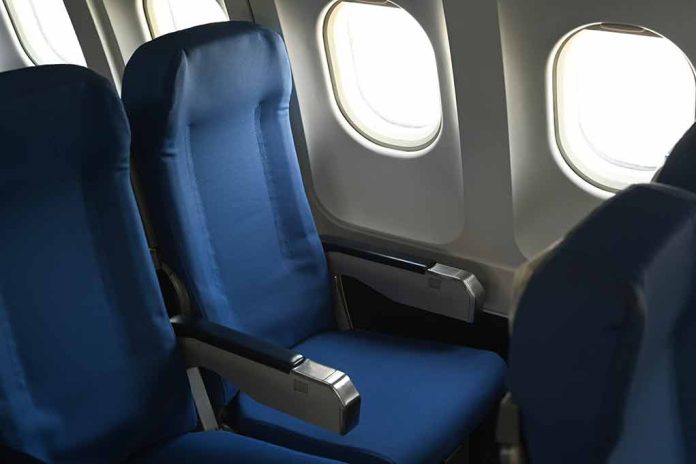
Airlines grapple with seating policies for plus-size passengers, sparking debate on discrimination and comfort.
At a Glance
- Many airlines require larger passengers to purchase two seats, raising discrimination concerns.
- Southwest Airlines introduced a “Customer of Size” policy allowing free extra seats.
- Over 40% of Americans are considered obese, according to the CDC.
- Advocacy groups call for clearer, consistent rules to prevent discrimination.
- Airline seat sizes have been shrinking, exacerbating passenger discomfort.
Airlines Face Pressure Over Plus-Size Passenger Policies
As the obesity rate in America continues to rise, with over 40% of the population now considered obese according to the CDC, airlines are facing increased scrutiny over their policies regarding plus-size passengers. Many carriers require larger individuals to purchase two seats, a practice that has sparked heated debate and calls for anti-discrimination measures.
The issue has gained significant attention on social media, with passengers sharing experiences of discomfort and airlines defending their safety protocols. Budget airline Scoot’s policy states, “if you are a guest of size who requires 2 seats … fares and fees for 2 guests apply.” This approach has been criticized by advocacy groups who argue that obesity should not be viewed solely as a lifestyle choice, given evolving scientific understanding.
Plus-sized traveler demands free seats, better accommodations on airlines:
“All plus-size passengers should be provided with an extra free seat, or even two or three seats depending on their size, to accommodate their needs and ensure their comfort during the flight” pic.twitter.com/3h0FWhn6BR
— Daily Loud (@DailyLoud) April 16, 2023
Southwest Airlines Takes a Different Approach
In a move that has garnered both praise and criticism, Southwest Airlines recently introduced a “Customer of Size” policy. This initiative allows plus-size passengers to receive an extra seat for free if needed, aiming to ensure safe and comfortable seating for all travelers. Passengers can also purchase two tickets and request a refund for the extra seat after traveling.
“This is a new approach to dealing with smaller airline seats, and the need to accommodate heavier passengers,” said Ed Booth, an aviation expert.
Southwest Airlines says plus-size passengers who may have difficulty sitting comfortably in their seats can get an extra one for free. https://t.co/epI5r2eYXm pic.twitter.com/wiDbNiwN2v
— ABC7 Eyewitness News (@ABC7) December 15, 2023
While some applaud Southwest’s effort to address the issue, others raise concerns about potential impacts on other passengers and flight operations. The policy has reignited discussions about airline seat sizes, which have been shrinking over the years to maximize capacity and profits.
Calls for Clearer Regulations and Passenger Rights
The Obesity Collective in Australia is among the organizations calling for clearer and more consistent rules to prevent discrimination and reduce anxiety for affected passengers. In Canada, a 2008 supreme court ruling requires airlines to provide two seats for the price of one on domestic flights for people with obesity, recognizing it as a human rights issue.
The Australian Human Rights Commission suggests that charging more for larger passengers could be considered unlawful disability discrimination. This stance highlights the complex legal and ethical considerations surrounding the issue.
The Broader Impact on Air Travel
The debate over plus-size passenger policies is part of a larger conversation about airline comfort and fairness. With most U.S. carriers reducing seat width and pitch, passengers of all sizes are feeling the squeeze. The Federal Aviation Administration (FAA) has received numerous complaints about shrinking airline seat sizes, prompting calls for industry-wide standards.
As the aviation industry continues to grapple with these challenges, it’s clear that a balance must be struck between passenger comfort, safety, and operational efficiency. The ongoing debate underscores the need for compassionate and practical solutions that respect the dignity of all travelers while ensuring the safety and comfort of everyone on board.














